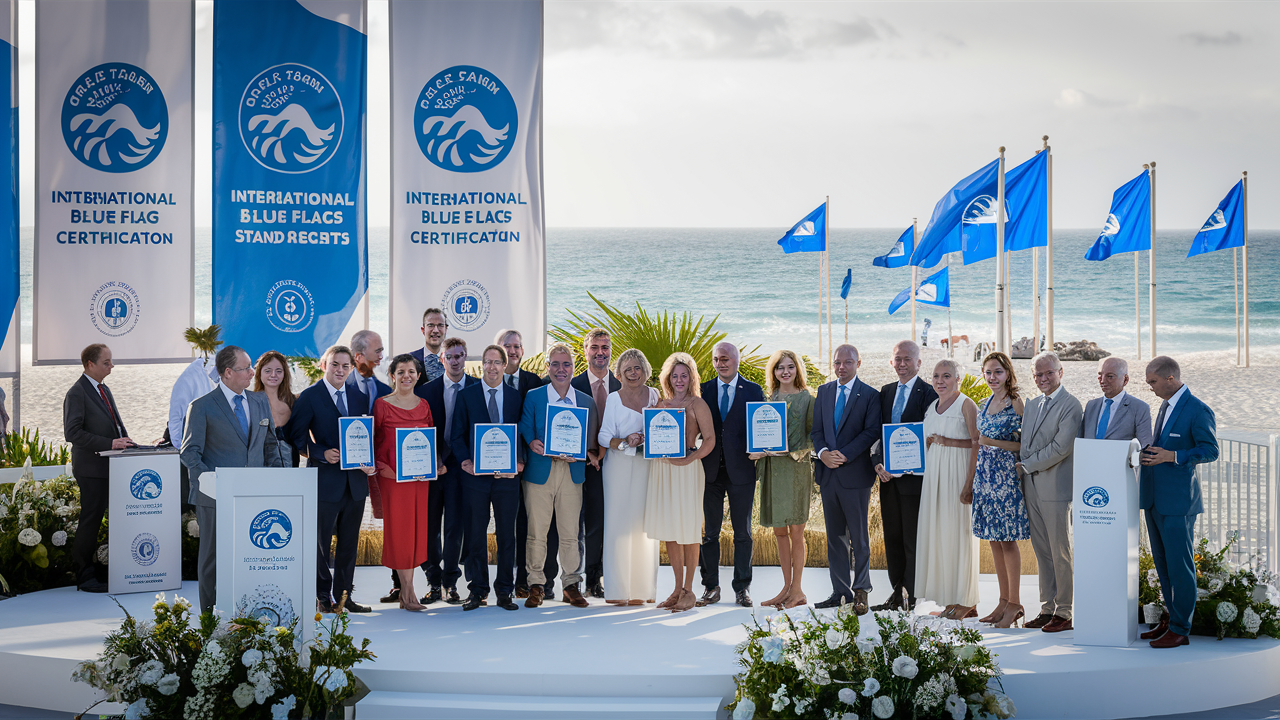Table of Contents
ToggleWhat is Interrnational Blue Flag Certification?
The International Blue Flag certification is a prestigious award given to beaches, marinas, and sustainable boating tourism operators that meet strict environmental, educational, safety, and access criteria. This certification program is recognized worldwide and is managed by the Foundation for Environmental Education (FEE) headquartered in Denmark. In this article, we will explore what the International Blue Flag certification is, its history, criteria, benefits, and how to obtain it.
History of the International Blue Flag Certification
The Blue Flag certification was first established in France in 1985, and its initial focus was on the environmental quality of beaches. It was designed to promote sustainable tourism in coastal areas and to encourage local authorities to take action to protect their natural environments. The program was then expanded to include marinas in 1987, and it now includes sustainable boating tourism operators as well.
In 1987, the FEE took over the management of the program, and it has since grown to become a global certification program. Today, the Blue Flag is recognized in over 50 countries, and more than 4,000 beaches, marinas, and sustainable boating tourism operators hold the certification.
Criteria for the International Blue Flag Certification
To be awarded the Blue Flag certification, a beach, marina, or sustainable boating tourism operator must meet strict criteria in the following categories:
- Environmental Education and Information: The site must provide environmental information to visitors and organize educational activities to promote sustainable tourism.
- Water Quality: The water quality at the site must meet a set of strict standards, including regular testing for pollutants.
- Environmental Management: The site must have an environmental management plan in place to manage waste, energy, and water resources.
- Safety and Services: The site must provide adequate safety and first-aid facilities, as well as services such as showers, toilets, and waste disposal.
- Environmental Protection: The site must have policies and procedures in place to protect the natural environment, including measures to protect wildlife and habitats.
- Access: The site must be accessible to all visitors, including those with disabilities.
Benefits of the International Blue Flag Certification
The benefits of the Blue Flag certification are numerous and varied, and they include:
Environmental Protection: The certification promotes sustainable tourism practices that help protect the natural environment.
Tourism Promotion: The Blue Flag is a recognized symbol of quality that attracts tourists to certified sites.
Improved Facilities: Sites that obtain the certification are required to provide high-quality facilities and services.
Public Awareness: The certification program raises public awareness of environmental issues and encourages visitors to take responsibility for their impact on the environment.
International Recognition: The Blue Flag is recognized worldwide, providing sites with international recognition and exposure.
How to Obtain the International Blue Flag Certification
To obtain the Blue Flag certification, a beach, marina, or sustainable boating tourism operator must first meet the eligibility criteria set by the FEE. Once eligible, the site must submit an application to the relevant national operator, who will assess the site against the Blue Flag criteria.
If the site meets the criteria, it will be awarded the Blue Flag certification, and it can then use the Blue Flag logo to promote its certification. The certification must be renewed annually, and the site must continue to meet the criteria to maintain its certification.
Conclusion
The International Blue Flag certification is a prestigious award that recognizes beaches, marinas, and sustainable boating tourism operators that meet strict environmental, educational, safety, and access criteria. The program promotes sustainable tourism practices and encourages local authorities to take action to protect their natural environments. The benefits of the certification are numerous and varied, and they include environmental protection, improved facilities, tourism promotion, public awareness, and international recognition. To obtain the certification, a site must meet the eligibility





